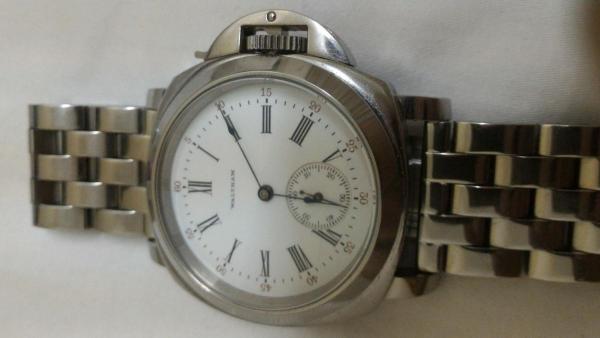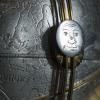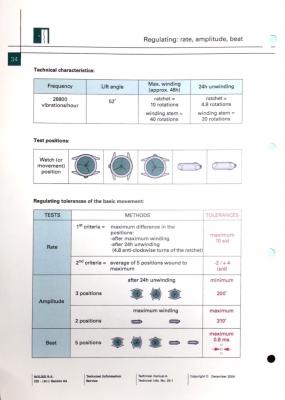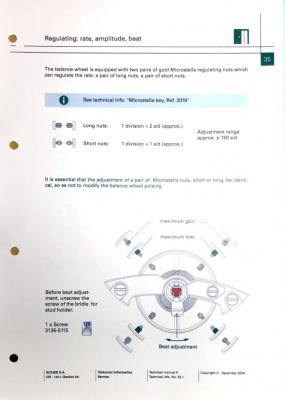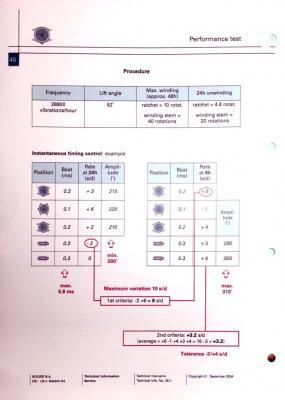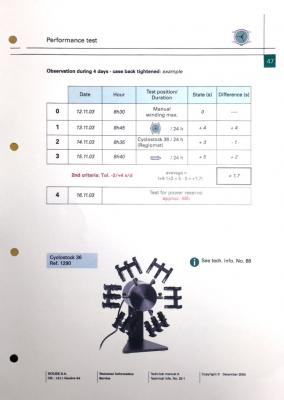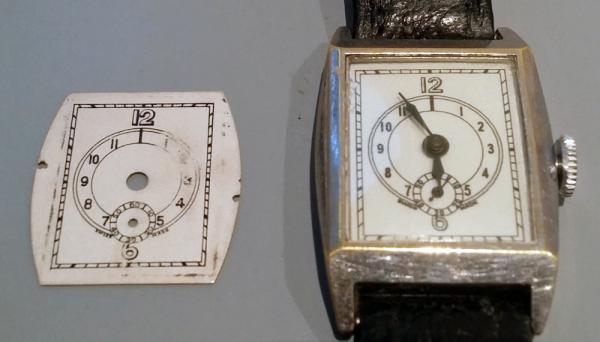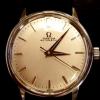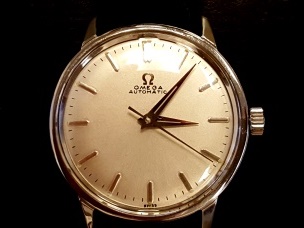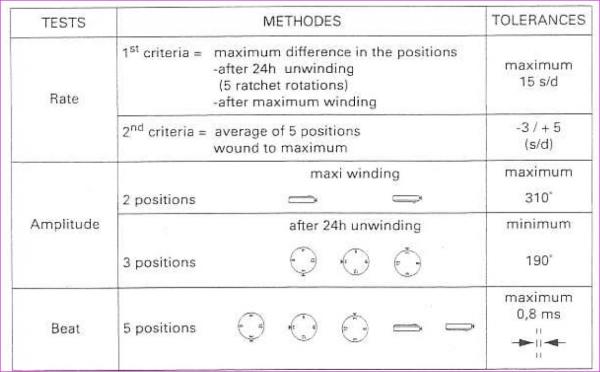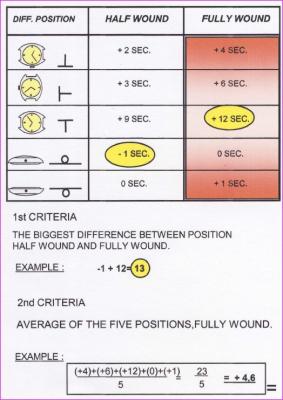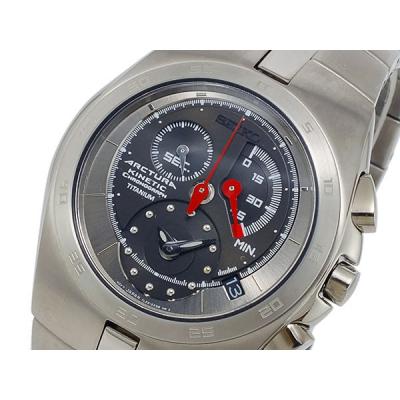Leaderboard
Popular Content
Showing content with the highest reputation on 02/22/16 in all areas
-
Here's a couple of watches from my collection. An IWC Mk11 and a '56 Longines 6B/159. I mainly collect military watches.2 points
-
2 points
-
2 points
-
Put back together with new bezel insert, crystal, gaskets and the movement completely cleaned and reassembled. Sent from my iPhone using Tapatalk2 points
-
I've been a watch dealer for around 13 years. Asking what's a good investment and what watches will go up in price is a redundant question really, because in all honesty if I knew myself I'd be hoarding it all up, and same goes for anyone else who deals in watches. It's completely a unpredictable market and watches do go up and down in price. I'll try to give some good advice though to someone on a budget. Ebay and auctions I suggest avoiding, sellers aren't honest and you have the competition of the whole world, anything good another person will snap up before you and what is worth buying in my experience has a 70% chance they need some good work done to them to get them working in a correct state. I have made some money from buying off ebay, but this is only due to know exactly what I am buying and the experience of selling the same watches previously. In the market or trade buying watches is tricky too, I value people who have a good reputation. Avoid people who are hard sellers, there's a reason they are trying to push on a watch on you, it's because they are stuck with it. Anyone who is fairly reserved, know that watches sell themselves and the right person will come to buy from them. As for $50 - $200 range, very very tricky. If you started 10 years ago, I'd say absolutely yes, you can buy something amazing for that price, in omega, longines, zenith, movado, jaeger lecoultre. This was a time when people were purely buying watches because they loved watches. Now the crowd is slightly different and buying purely because they have seen watches go up in price, websites like hoodinkee have started promoting them up as a trendy thing to do as a hobby. While the high end market is now controlled and have rings or people controlling the price, as they know they can buy them out and ask what any price they want, as they have the money to do this. I think I'd recommend these brands, as really good quality watches for fair prices:- 1940's - 1960's Longines - Just about possible to buy in your top end price range. Zenith - a bit more easier to buy in your top price range. Movado - Same as above two, but a bit more easier to buy. Smiths - These have a following and can be bought for around £50 - £150 in steel and sometimes gold (But maybe these are more of a british market) avoid anything that is under 15 jewels. They are very good value for money and have a possible future of going up in price. Good quality bargains but hard to say if any chance of going up in price:- All around the £100 for the amazing and alot less for the ordinary:- 1940's - 1960's Cyma Rotary Record And these brands are steady rising and what you should aim for, but will be out of your price range. Rolex Iwc Omega Jaeger lecoultre I think a good rule of buying, is really just to buy what you like. You really shouldn't be buying watches to impress other people, I just consider this a really bad reason to buy, I've seen people do this with someone who says they like some watch and then the other person buys one because of that, and I'm like thinking you didn't even know what it was until someone else wanted it. As a dealer I check 3 things. First the dial, to see if it's original. Purely for resale value it will matter if the dial is original and clear. I have nothing against restored dials, because you are basically buying something with an expiration date anyway, but somewhat harder to sell. For patina dialed watches, it's purely personal taste, for the normal watch though I'd prefer to buy a restored dial watch than a spotty, scratched or blemish marked dial, they are unsellable like that, unless it's something quite rare. Secondly the movement. Got to check that everything is working. (Normally it isn't though, so expect to pay some money for servicing, you can't really tell until you get home with it.) And finally the case, check to see if it's been over polished or has any serious damage.1 point
-
What an unusually flattering picture of Nick Hayek, he looks much more intelligent than he actually is.1 point
-
1 point
-
I have done this once in the past with a friends old pin lever: Firstly the dial was photographed & loaded into Adobe Indesign (this can be done on Adobe Illustrator or similar as well) & a new dial drawn using the photo as a template. This was then printed onto photo card, cut out accordingly & placed in the watch. Due to alignment issues I eventually printed it on white waterslide decal paper, clear is also available, but white was used to cover the marks on the old dial. It is the cut slightly oversize & placed on the existing dial . This looked fine although on very close inspection the printer (an Epson Stylus Photo P50) does tend to square off the circles slightly & the lines are little heavier (sorry forgot to photo the final version). Printing onto waterslide decal paper is the same as printing photo paper. After printing it is given a couple of coats of acrylic spray varnish & when dry used like the decals on your old plastic model kits. The manufactures recommend lightly baking the item in the oven to permanently fix it. Unfortunately I don't think this would work on a heavily textured dial although I haven't tried it yet, but I do have a Smiths National 15 in need of some TLC and may give it a go soon. Thanks for the TZ article Stroppy.1 point
-
How about going to bed with a cheap Seiko and waking up with a nice expensive Rolex instead! Must have dreamed that I guess. :D1 point
-
I went looking for a new button at Maplins and they keep the exact same one. Just soldered it in and it's working fine. I reckon it must have had a dodgy button fitted. Anyhow, back in business now and going to get demagnetising.1 point
-
Greetings from the desert of California. I've bought a few vintage watches over the past year, and after seeing a couple of Mark's videos, decided it would be helpful to learn how to open them up, clean them and maybe do a few minor repairs. The photo is of the watch I am wearing today, an Omega from 1959 (I think). Looking forward to learning more about watches and watch repair. I'm really enjoying the videos. Mark is an excellent teacher.1 point
-
1 point
-
1 point
-
Stephen, I have been too busy with other things at the moment, so horology has had to take a back seat just now. It is an ultrasonic dental scaler.1 point
-
As a reminder timekeeping is not purely the length of the hairspring and the physical characteristics of the balance wheel there's something else that screws timekeeping up that's the escapement. The escapement supplies the energy to run the balance wheel but in doing so it influences the rate of the oscillation. Then there is the other things like external influences physically moving the watch temperature changes vibrations. But the biggest one is the escapement. So your word for the day is Isochronism. So a balance wheel is considered to be isochronous when the duration is independent of the amplitude. So here's a thought on why beat at anything less than zero is bad. First what exactly is the hairspring for? We think about it as part of the oscillation system but it has another purpose which is it supplies the force for unlocking the escapement. So the strange way to think about this is by being out of beat it's almost like one side of the escapement is running at a different amplitude because it doesn't have as much energy to unlock the escapement. Everything we do with the escapement is bad for timekeeping if it's not adjusted correctly. So I'm attaching timing requirements for the 2230-2235 Which are almost identical to the 3135. I don't actually have a beat error for the 3135 but it should be the same. So the first criteria for the 3135 is 15 seconds and the second criteria is -1 to +5 seconds. Then to understand how Rolex comes up with those numbers I have another image.1 point
-
Hi Bob! Thank you for the "pep-talk", highly appreciated :) Even though I fully agree that quality tools do the job a whole lot better than my "El-cheapo's, in this case you would have needed 1mm wide or so. The hand in question is the red one, top right (it shows how many minutes the stopwatch has run). As you can see it is even situated a "level down", which made it very hard to get to. The top part of the hand was more or less flush with the "top" of the dial. Also, if you look close, you can see that whole hand consist out of two pieces, the red hand and a center bushing. It was for me indeed the most difficult hand I worked on up till that point. They are extremely thin. Of course, then there is the risk of scratching the dial. Normal plastic from a zip-back was far too thick, I had to use kitchen cling-film to get just underneath. No, an insurance is out of the question. I'm not in it for profit and I have no intentions to get to any kind of professional level. Anyhow, I didn't get that discouraged.......played whole day with my Rolex, adjusting the beat error :)1 point
-
That makes you part of a selected group of people exceptionally gifted! :D1 point
-
Maybe you just need to reduce the hole in the minute hand. I insert a pin or something with the approximate diameter of the hole and squeeze the outside, gently with a blunt nail clip I've prepared for this (I filed an indentation in the middle, easy to make). The idea is not to collapse the hole or making it too tight that you can not insert the hand.1 point
-
1 point
-
1 point
-
I really don't think it will move a jewel as there is no direct pressure exerted from the probe. The probe is kept in a bead of water just above the jewel with the vibrations passing through the water and it is only for a few seconds. If the jewel did move, I would say it was not tight enough in the first place.What I have thought about, is using it to help remove rusted in screws. I would first soak the plate and screw in penetrating oil overnight then at the same time as using the screwdriver, apply the probe directly to the screw. Who knows, it might help.1 point





